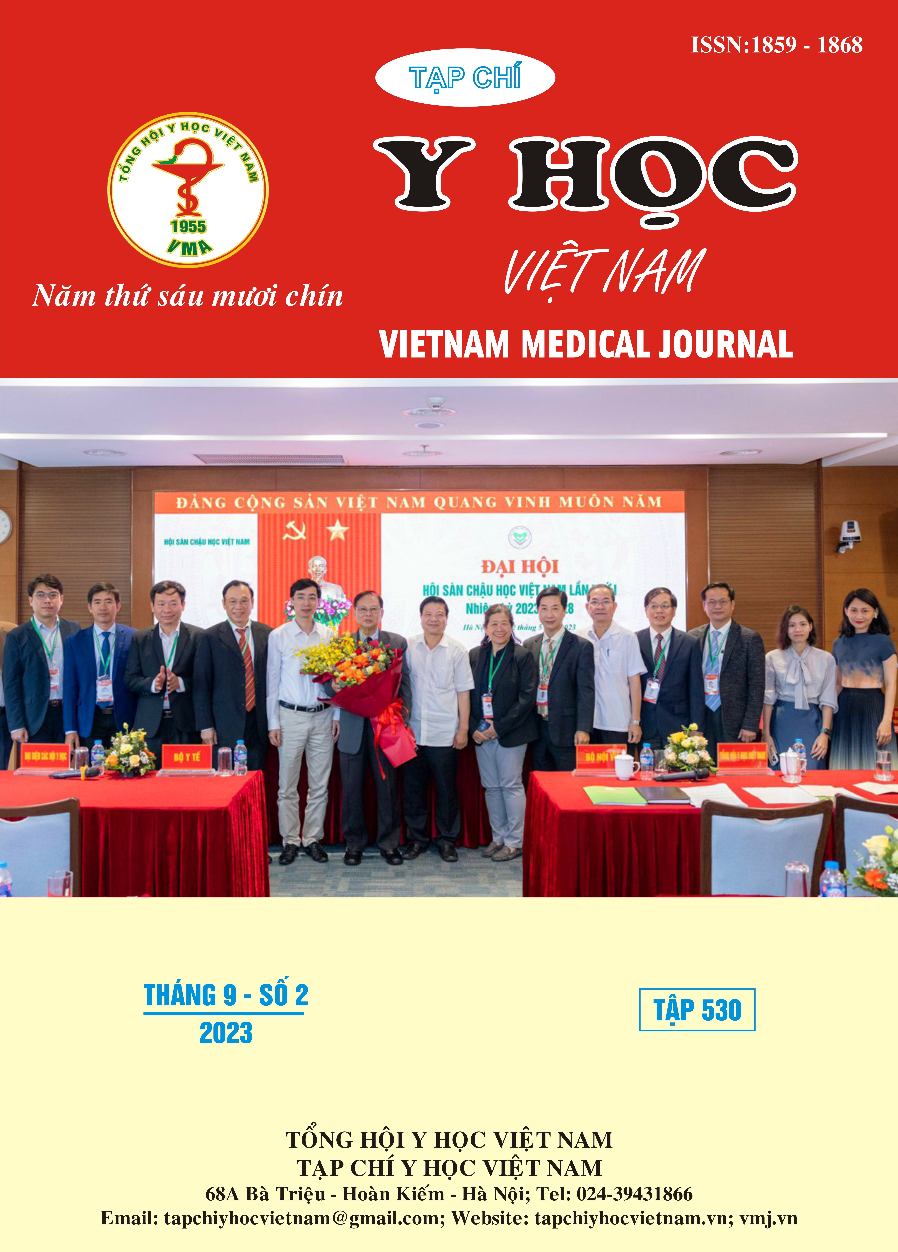THE RELATIONSHIP BETWEEN EPIDEMIOLOGICAL AND CLINICAL FEATURES WITH THE EFFICACY OF FRACTIONAL 1064NM Nd:YAG PICOSECOND LASER IN SKIN REJUVENATION
Main Article Content
Abstract
Introduction: Skin aging is a natural process that occurs as the body ages. This is a complex biological process, influenced by a combination of endogenous factors (genes, cell metabolism, hormones) and exogenous factors (UV, chemical exposure, stress...). In Vietnam, picosecond lasers are increasingly used in skin rejuvenation. However, no studies have been conducted to evaluate the effectiveness and safety of this laser. Materials and Methods: This is a longitudinal case series study. A fractional 1064 nm Picosecond laser was used. Subject satisfaction was assessed at the end of the treatment course. VISIA Skin Analysis was performed at each visit. Results: There was no correlation between age, gender, duration of sunlight exposure, mask wearing behavior, sunscreen use, classification of skin aging with the improvement according to the patient's subjective assessment. In terms of correlation between epidemiological and clinical features with outcomes evaluated by VISIA, patients who were exposed to the sun for more than 60 minutes had lower therapeutic efficacy for UV spots, patients who did not or occasionally wore masks got worse results for spots, compared to those of other groups. Conclusion: Fractional 1064 nm Picosecond laser is safe and effective for Vietnamese in skin rejuvenation.
Article Details
Keywords
Fractional 1064 nm Picosecond laser, epidemilogical factors, clinical factors, effectiveness, skin rejuvenation
References
2. Fisher, G.J., et al., Pathophysiology of premature skin aging induced by ultraviolet light. New England Journal of Medicine, 1997. 337(20): p. 1419-1429.
3. Guss, L., M.P. Goldman, and D.C. Wu, Picosecond 532 nm neodymium-doped yttrium aluminium garnet laser for the treatment of solar lentigines in darker skin types: safety and efficacy. Dermatologic Surgery, 2017. 43(3): p. 456-459.
4. Gescheider, G.A., et al., The effects of aging on information-processing channels in the sense of touch: I. Absolute sensitivity. Somatosensory & motor research, 1994. 11(4): p. 345-357.
5. Haedersdal, M., et al., Ultraviolet exposure influences laser-induced wounds, scars, and hyperpigmentation: a murine study. Plastic and reconstructive surgery, 1998. 101(5): p. 1315-1322.
6. Beckage, B., T.E. Buckley, and M.E. Beckage, Prevalence of face mask wearing in northern Vermont in response to the COVID-19 pandemic. Public Health Reports, 2021. 136(4): p. 451-456.
7. Parrado, C., et al., Environmental stressors on skin aging. Mechanistic insights. Frontiers in pharmacology, 2019. 10: p. 759.
8. Manuskiatti, W., et al., Objective and long‐term evaluation of the efficacy and safety of a 1064‐nm picosecond laser with fractionated microlens array for the treatment of atrophic acne scar in Asians. Lasers in Surgery and Medicine, 2021. 53(7): p. 899-905.
9. Schomacker, K. and J.D. Bhawalkar, Mechanisms of Action of Fractionated 532nm and 1064nm Picosecond Laser for Skin Rejuvenation.
10. Habbema, L., et al., Minimally invasive non‐thermal laser technology using laser‐induced optical breakdown for skin rejuvenation. Journal of biophotonics, 2012. 5(2): p. 194-199.
11. Bernstein, E.F., et al., Treatment of Photoaging With a Dual-Wavelength, 532 nm and 1,064 nm Picosecond-Domain Laser Producing a Fractionated Treatment Beam Using a Holographic Optic. Journal of Drugs in Dermatology: JDD, 2017. 16(11): p. 1077-1082.


